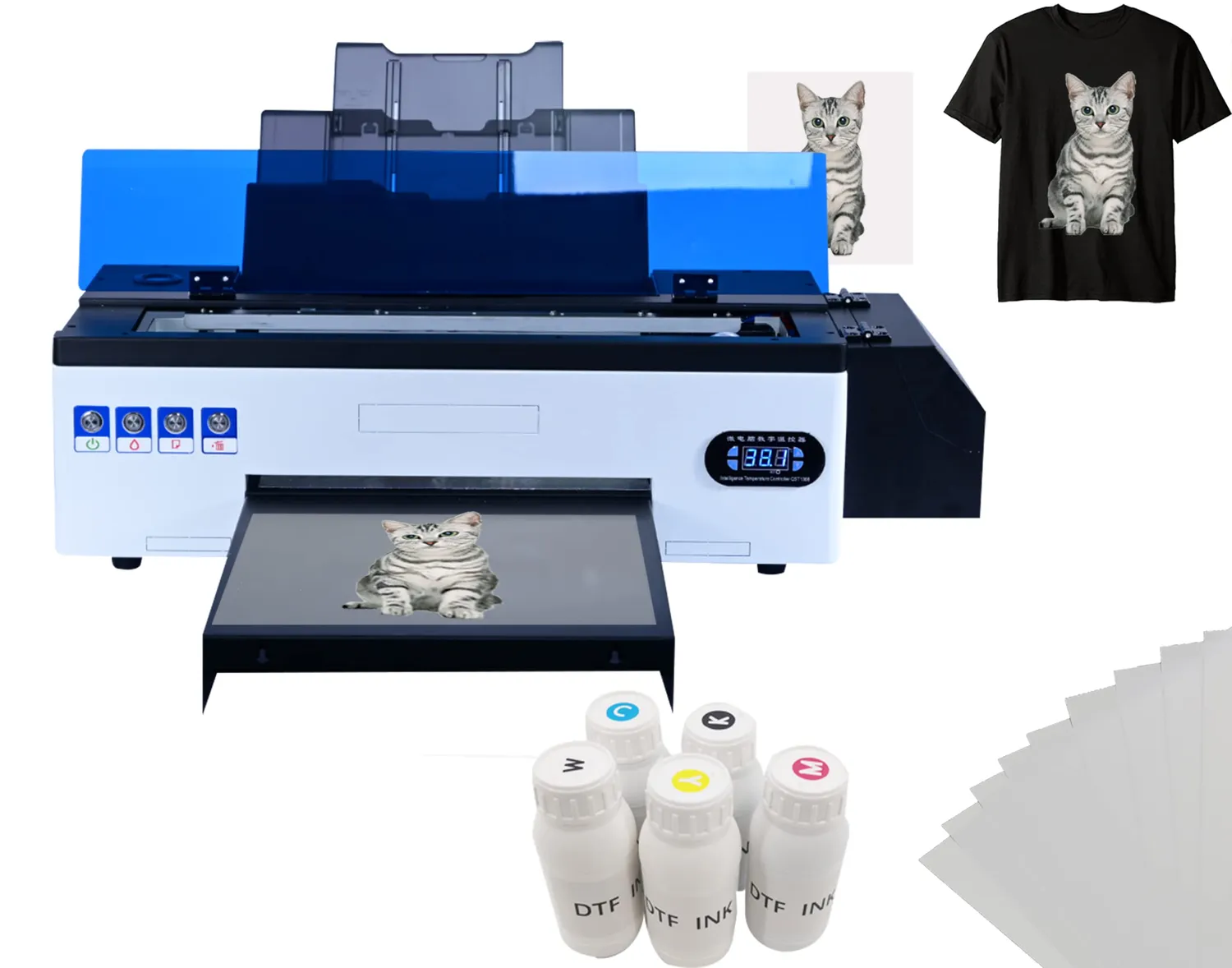
Like any printing method, DTF printing can encounter various issues affecting print quality and workflow. Troubleshooting these issues promptly is crucial to maintaining productivity and ensuring high-quality prints. Here are some common issues with DTF printing Machine and their solutions:
1. Poor Print Quality
- Issue: Prints appear blurry or pixelated, or colors are not vibrant.
- Solution:Check Print Settings: Ensure print resolution settings are appropriate for the design and fabric.
Inspect Print Heads: Clean print heads to remove dried ink or debris that may be affecting print clarity.
Color Calibration: Perform color calibration to ensure accurate color reproduction.
Check Ink Quality: Verify that the ink cartridges are not expired and are of high quality suitable for DTF printing.
2. Adhesion Issues
- Issue: Design does not adhere properly to the fabric or peels off easily after transfer.
- Solution:Use Proper Adhesive Powder: Apply the correct amount of adhesive powder evenly across the printed design.
Adjust Heat Press Settings: Ensure the heat press is set to the correct temperature, time, and pressure recommended for the specific fabric and adhesive powder.
Pre-Press Fabric: Briefly pre-press the fabric before applying the design to remove moisture and wrinkles and ensure better adhesion.
3. Color Inconsistencies
- Issue: Colors in the printed design do not match the intended colors or exhibit uneven color distribution.
- Solution:Check Ink Levels: Ensure there is enough ink in the cartridges for consistent color output.
Perform Maintenance: Clean print heads and perform nozzle checks to ensure all nozzles are firing properly.
Color Profile Adjustment: Adjust color profiles in the printer software or RIP (Raster Image Processor) software to achieve desired color accuracy.
4. Ink Smudging or Bleeding
- Issue: Ink smudges or bleeds during or after the transfer process, affecting print clarity.
- Solution:Optimize Heat Press Settings: Adjust heat press settings to the optimal temperature and pressure for the fabric and ink type to prevent ink bleeding.
Ensure Proper Drying: Allow sufficient drying time after printing and before transferring the design to prevent smudging.
Use Quality Ink: Ensure the ink used is compatible with DTF printing and does not bleed excessively under heat.
5. Film Feeding Issues
- Issue: Film jams or does not feed properly into the printer.
- Solution:Inspect Film Roll: Ensure the film roll is loaded correctly and aligned properly with the printer’s feeding mechanism.
Clean Feeding Mechanism: Remove any debris or dust from the film feeding path and rollers to prevent jams.
Adjust Tension: Adjust the tension settings on the film roll holder to ensure smooth feeding without wrinkles or jams.
6. White Ink Printing Issues
- Issue: White ink does not print evenly or appears patchy, especially on dark fabrics.
- Solution:Shake Ink Cartridges: White ink cartridges may settle over time. Shake them gently before use to ensure consistent viscosity.
Print Head Maintenance: Clean print heads specifically for white ink to prevent clogging, which can lead to uneven printing.
Adjust Print Settings: Increase the number of passes or adjust print settings to ensure adequate coverage of white ink, especially on dark fabrics.
7. Equipment Maintenance
- Issue: Printer malfunctions or downtime due to equipment issues.
- Solution:Regular Maintenance: Follow manufacturer guidelines for routine maintenance, including cleaning print heads, replacing worn parts, and updating firmware.
Keep Equipment Clean: Keep the printer and heat press clean of ink residue and debris to prevent mechanical issues.
Monitor Ink Levels: Always check ink levels and replace cartridges or refill ink tanks promptly to avoid interruptions during printing.
Tips for Effective Troubleshooting:
- Keep Records: Maintain a log of maintenance activities, print settings used, and any issues encountered for future reference.
- Consult Manufacturer Resources: Refer to the printer manual, troubleshooting guides, and online support resources provided by the manufacturer for specific troubleshooting steps.
- Training and Expertise: Ensure operators are trained in troubleshooting common issues and performing routine maintenance tasks effectively.
By addressing these common issues promptly and implementing preventive maintenance practices, you can optimize the performance of your DTF printer and consistently produce high-quality prints for your t-shirt printing business. Regular monitoring and proactive troubleshooting will help minimize downtime and maximize productivity.